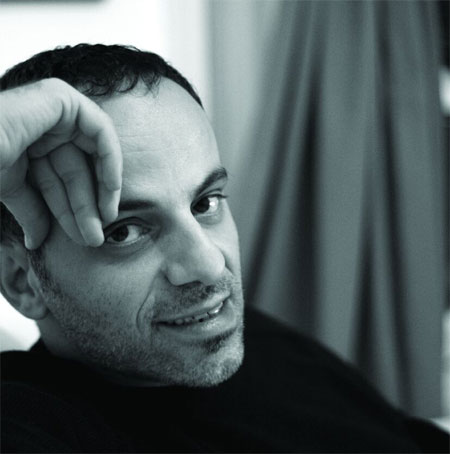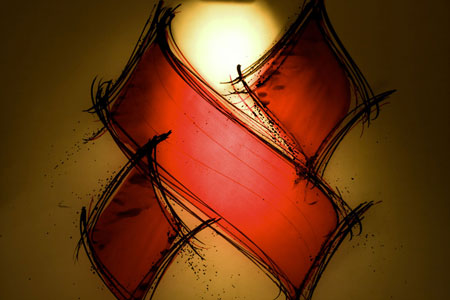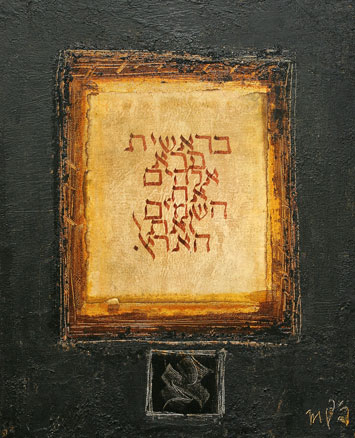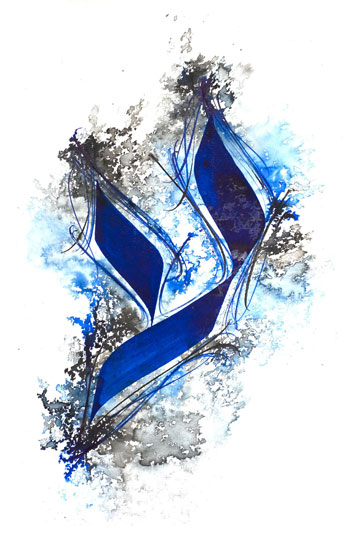Bringing Letters to Life
Author: Yitzchok Moully
Truth be told, I knew this would happen at some point — interviewing a non-Jewish artist who makes Jewish art, but I didn’t think it would happen so soon.
When I first looked at the work of Michel D’Anastasio I felt the warmth and energy of his Hebrew calligraphy photographs; it never even occurred to me that he is not Jewish!
Michael was born Catholic and raised in France where he developed an early love for the art of calligraphy. One little problem — he is left-handed, a major obstacle for a calligrapher.
 Michel D’Anastasio
Michel D’AnastasioWith the encouragement of professionals in the field, Michel created his own method of writing using his left hand. Without an acceptable path to follow, Michel found himself in new territory. Nonetheless, he persisted and mastered his unique method.
Doing some genealogical research on the family’s origins in Malta, Michel discovered that he had Jewish ancestry. A few months later on a trip to Israel Michel discovered Jewish culture, and more specifically the Hebrew alphabet. Fascinated by the letters and their energy Michel returned to Paris to delve into this new domain, further developing his personal style and approach to the letters: «A new world has been opened to me with its new palette of shapes and signs».
Forming a special bond with the Hebrew letters, Michel creates stunning imagery with letters that dance, move, and emit energy.
Michel’s approach has evolved beyond straight calligraphy on paper or cloth; through the use of photography he is able to experiment with light, shadow, color and contrast, thereby allowing the letters and calligraphy to take on a richer, more animated form.
Calligraphy, especially Hebrew calligraphy, has traditionally been seen as a highly specialized craft and as a means by which a Sofer (traditional Torah scribe) can transcribe the Torah to the next generation. Unlike most languages, Hebrew is written from right to left, making Michel’s seeming liability into an asset.
As a Christian creating art with the Hebrew letters, Michel has deep respect for G-D and the Torah. He approaches this work with great reverence, as he looks to enhance and expand his dialogue with the letters and their meanings. Michael seeks out meaningful phrases from the holy text to convey through his work. The traditional Torah calligraphy is a starting point which Michel seeks to transcend.
In contrast to the work of a Sofer, Michel is not bound by any set of rules or the continuance of a sacred tradition. Rather, he is able to take the letters into a more modern realm, while paying full respect to the letters and their holiness.
The Jewish community has responded very positively to his work; Rabbis and community members have congratulated him on his innovative narrative of the Hebrew letters and finding new expression for the Torah’s letters. But Michel is still waiting to meet a scribe who will share a personal thought regarding this unique approach.
Unfortunately, the art of Hebrew calligraphy has not reached far beyond the Jewish community. The Ketubah, as a work of art and function, is one of the most recognized expressions involving this type of lettering, and as you might expect, Michel is trying to change that in his own way as well.
Michel has shown his work in galleries and museums throughout Europe, giving the Hebrew letters a broader audience and bringing his unique work of Hebrew calligraphy to a secular audience outside of «the tribe». Though not Jewish, I think Michael has connected with the essence of the letters conveying their soul and unique energy, making his work without doubt Jewish art.
What is Jewish art according to Michel?
«Jewish art is the representation of Judaism in all different forms that allow transmission of knowledge and knowledge of a people to foster closer connections to G-D».
Source: The Algemeiner






